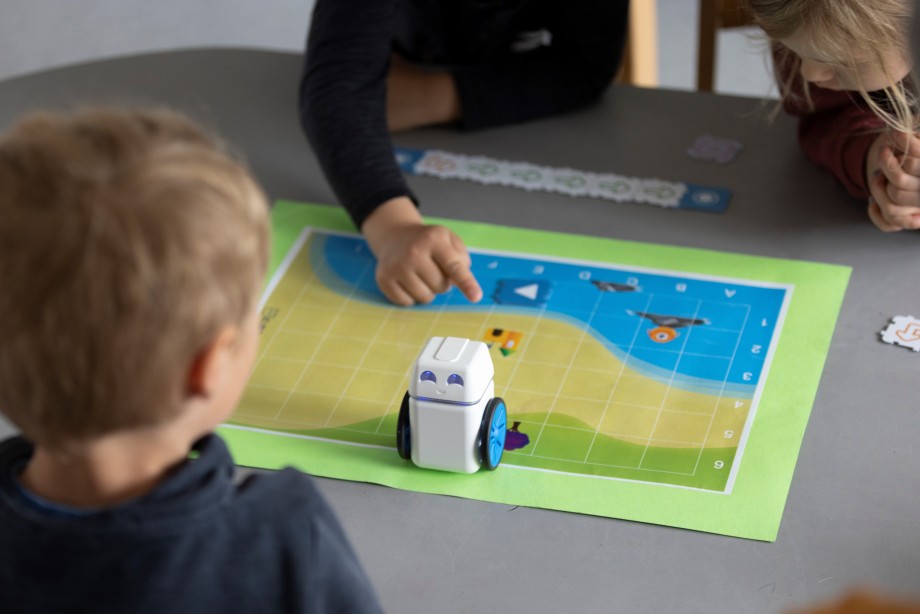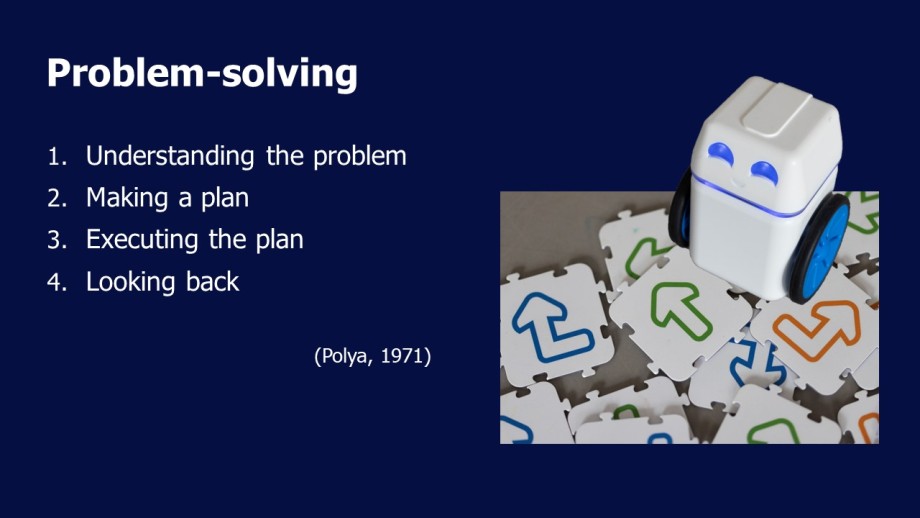Problem-solving is about finding solutions to all kind of problems. It can be seen as a basic strategy for addressing both everyday challenges, such as getting dressed, and more specific challenges, such as coding a robot.
Problem-solving is a way of thinking aimed at addressing various challenges. It can help children understand and make choices in both everyday and more complex situations and is considered a key skill in a rapidly changing world. In the Norwegian Framework Plan for Kindergartens, problem-solving is highlighted as an important competence linked to the learning area "Quantities, Spaces and Shapes" (Directorate for Education and Training, 2017, p. 53).
In this resource from FILIORUM – Centre for Research in Early Childhood Education and Care, the results presented in the research article Critical thinking, problem-solving and computational thinking: Related but distinct? An analysis of similarities and differences based on an example of a play situation in an early childhood education setting by Francesca Granone, Enrico Pollarolo and colleagues (2023).
In the video, the four phases of a problem-solving process is presented: understanding the problem, making a plan, executing the plan and looking back. To describe how problem-solving can be understood and carried out together with young children, an example of a group of children coding a robot is used. This is just an example; the same problem-solving process can be used in many different situations.
Aim: By using this resource, teachers will gain knowledge of how problem-solving strategies can be defined and observed, and how they can support children's problem-solving abilities. Useful for: Early childhood in-service teachers, early childhood preservice teachers, and university teachers in early childhood teacher education. Recommended time use: 45-60 min. Tips for using this resource: 1. Watch the video. 2. Discuss the reflection questions, preferably in groups. 3. Carry out the activities together with the children (see Activities). 4. Share experiences with each other at the next staff meeting or lecture.

In the photo, we see three children coding the robot KUBO. "To code" means to give the robot instructions so that it can perform an action.
Questions for reflection - before the video
Reflect individually and in groups.
- What do you think of when you hear the word "problem-solving"?
Problem-solving in kindergarten - a professional video
As you watch the video, notice two things about problem-solving with children that you were not aware of before.
This professional video shows Arnt Derik Eia and three children from Austrått kindergarten coding the robot KUBO together to solve a challenge.
Questions for reflection - after the video
Individually
- Did you get any new ideas about problem-solving after watching the video?
In groups
- How do you facilitate activities that help the children gain experience in problem-solving?
- How do you support the children's understanding of a problem?
- How do you help them make a plan? Think of a situation in which a child makes a plan alone and a situation in which several children work together to make a plan. What do you think about these two different situations?
- What is important for the children to feel safe in executing the plan?
- How do you support the children's evaluation of the plan that was executed?
"Unplugged" means that the activity does not involve digital technology, but it is still closely connected to problem-solving.
Divide the children into groups. Give each group the task of describing or showing how they should dress on a rainy day. Each child can make and execute their own plan. Then, gather the children in the group and discuss the solutions. Are there more than one possible solution? Were there any plans that could have been implemented more quickly? Consider the different plans with the children.
Download the examples:
"Plugged" means that the activity involves digital technology.
Invite the children to a coding game with a robot. Start by telling them a fairy tale in which the robot goes from one place to another to find a treasure. Have the children talk to each other to understand the problem and make a plan. Then, have them execute the plan. Discuss with the children and help them reflect on how it went.

Early childhood research from FILIORUM
This resource from FILIORUM - Centre for Research in Early Education and Care draws on the results from the following research article:
Granone, F., Reikerås, E. K. L., Pollarolo, E., & Kamola, M. (2023). Critical thinking, problem-solving and computational thinking: Related but distinct? An analysis of similarities and differences based on an example of a play situation in an early childhood education setting. Teacher Training and practice.
Aim
To gain knowledge of the similarities and differences in the characteristics of the terms "critical thinking", "problem-solving" and "algorithmic thinking" to help ECEC teachers support children's development in these areas.
Research question
- What similarities and differences between critical thinking, problem-solving and algorithmic thinking can be identified from both theoretical and practical perspectives?
Method
Content analysis of theoretical articles and a vignette from a pedagogical setting.
Data material
- Theoretical articles describing the three concepts: critical thinking (Lai, 2011), problem-solving (Polya, 1971) and algorithmic thinking (Wing, 2006).
- Transcription of observations of a kindergarten teacher and four 4–5-year-olds children playing with a robot.
Key findings
The content analysis of the theoretical articles shows that critical thinking, problem-solving and algorithmic thinking have common elements but are not exactly the same. Based on the connection between the theoretical analysis and a practical example of a play situation involving four young children aged 4–5 years and a kindergarten teacher, the analysis shows that all three skills can be developed. The role of the teacher and the way in which the teacher stimulates and supports children's learning seem crucial. This practical example shows that the teacher's questions and guidance can support the children in learning different skills and highlights the importance of the teacher's knowledge and awareness.
DiCoTe-project - The project aims to increase digital competence in Norwegian kindergartens by developing resources that can be used in Early Childhood Education Training.
Lai, E. R. (2011). Critical thinking: A literature review. Pearson's Research Report, 6(1), 40-41.
Polya, G. (1945). How to solve it. Princeton University Press.
Wing, J. (2006). Computational thinking. Communications of the ACM, 49(3), 33-35.

Contributing authors
Knowledge Centre for Education
Department of Early Childhood Education

